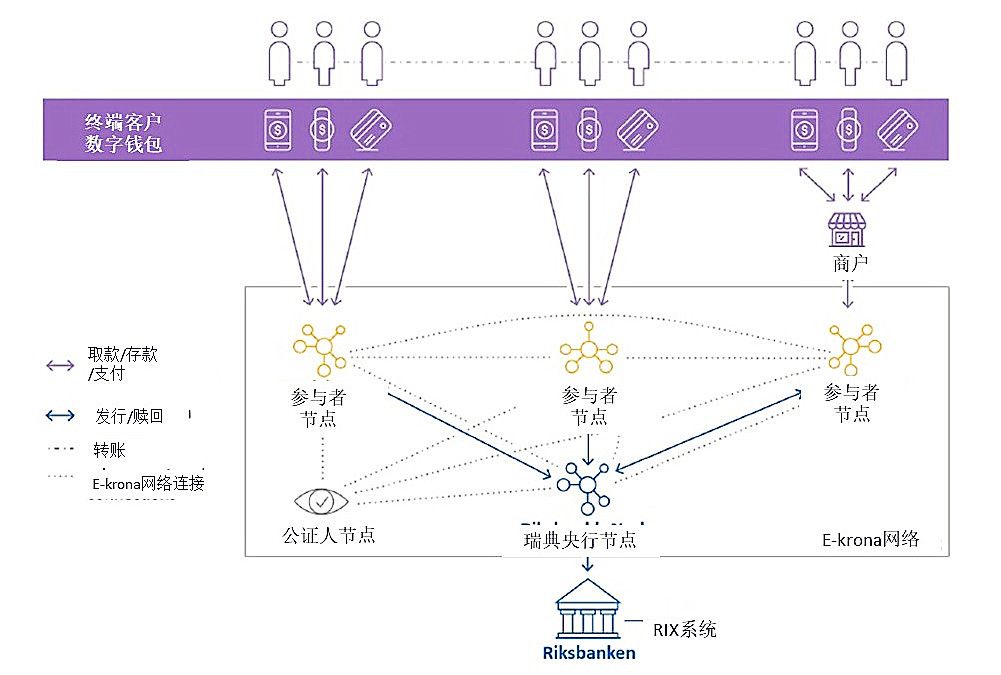Babbitt launches | Swedish central bank pilots "e-Krona", what are the characteristics of the world's first retail CBDC?
This article first appeared in Babbitt Information. Please indicate the source and author information for reprinting.
On February 20, the Bank of Sweden announced the pilot technical plan for the eKrone project. At this point, the Bank of Sweden's retail CBDC "e-krona" pilot project has finally started.
As the Nordic country is also the most developed country in the world, and non-cash payment methods are very developed, why should it issue a CBDC? As the central bank announcement states:
"The sharp decline in cash use over the past decade …. the public has no digital national currency available … e-kronor will enable ordinary people to continue to use the central bank's currency … lowering the Swedish krona weakened by competing private currency alternatives E-kronor will also promote continued competition and innovation in the payment market, safeguard the integrity of transaction data, and ensure that society has the ability to respond to problems with existing payment systems. "
- Digital Currency Research Institute of the People's Bank of China: Development and Management of Blockchain Technology
- Opinion: Ethereum is promoting crypto market recovery
- Insight into central bank patents: digital currency generation, circulation, and recovery solutions have taken shape
At the end of 2019, the Swedish central bank announced that it had completed the procurement of technical service providers for the e-Krona pilot project and signed a pilot agreement with Accenture Consulting on e-krona. After more than two months of preparation, from now until February next year, in one year Here, the appearance and performance of the electronic crown are tested in a closed test environment. This move signifies that the e-krona proposal was proposed in 2017, and after theoretical research and proof of concept, it has finally taken a substantial step forward and entered the first test phase, the closed test phase.

e-krona pilot conceptual architecture diagram
According to the technical solution content, the pilot project of e-krona has the following characteristics:
1. The e-kronor issued is a retail CBDC: it operates 24 hours a day, pays instantly, and can be used offline. Users can pay peer-to-peer, "as easy as sending text".
Second, the full reserve system: e-krona network participants deposit reserves through the central bank payment system RIX, in exchange for the Swedish central bank to provide participants with the same amount of e-kronor.
3. Double-layered delivery mechanism: The test environment is divided into two layers. In the first layer, the Bank of Sweden issues the bank's CBD-e-kronor to e-krona network participants such as banks; in the second layer, participants such as banks Deliver e-kronor to end users.
4. Multiple storage facilities: The facilities used by users to store CBDC can be digital wallets, which can be used for storage, payment, transfer, and payment processing through mobile phone apps; wearable devices (smart watches or video cards, etc.) can also be used. Pay. The first use of the digital wallet must be connected to the test network and activated.
V. Independent and closed operation: All transactions are conducted separately from RIX, and only the supply or redemption of e-kronor is completed through RIX. This will ensure that the e-krona network can play a substitute role when there is a problem with the existing payment infrastructure.
Corda platform using R3: e-krona uses DLT technology that is different from private cryptocurrencies. This is a blockchain technology developed for financial companies. It adopts an authorized operation mode. Only the Swedish central bank (notarization node) has Rights to approve and add new participants to the test network. The shortcomings of repeated payments are effectively prevented through the setting of notary nodes.
7. Establish a regulatory framework to define the relevant test content: the Swedish central bank controls and manages the entire network, and provides e-kronor publishers, transaction processes between nodes, transaction signatures, and record storage of transaction data. Integration with existing systems such as RIX and core banking systems, various forms of digital currency storage, and simulation of existing systems.
The Bank of Sweden once again emphasized that the main purpose of this pilot is to increase the understanding of the CBDC. Whether the technology will be officially issued and the e-kronor to be issued and what design features have not yet been finalized. But last year the Swedish central bank proposed to the parliament a special committee to review the concept of fiat money, the government's payment role in the digital economy, and the responsibilities of the state and private sectors in the payment market. Level issues.
Information Sources:
https://www.riksbank.se/en-gb/press-and-published/notices-and-press-releases/notices/2020/the-riksbank-to-test-technical-solution-for-the-e- krona /
Further reading:
Analysis of central bank digital currencies: What is the difference between retail and wholesale? Take the Swedish central bank as an example
We will continue to update Blocking; if you have any questions or suggestions, please contact us!
Was this article helpful?
93 out of 132 found this helpful
Related articles
- Analysis of Bitcoin's price trend with Elliott wave theory: we are in a rising stage
- Russia will ban the use of cryptocurrencies as a means of payment
- Analysis: Risks and Opportunities for Dual Currency Contracts (quanto)
- Anniversary of the planning of the Greater Bay Area: Guangdong, Hong Kong and Macau have become a treasure trove of blockchain development
- Morgan Stanley acquires crypto-friendly brokerage firm E * Trade for $ 13 billion
- Views | Oscar nominations have repeatedly been criticized, blockchain may change the status quo
- Blockchain war "epidemic" is on its way, 20 applications have landed






